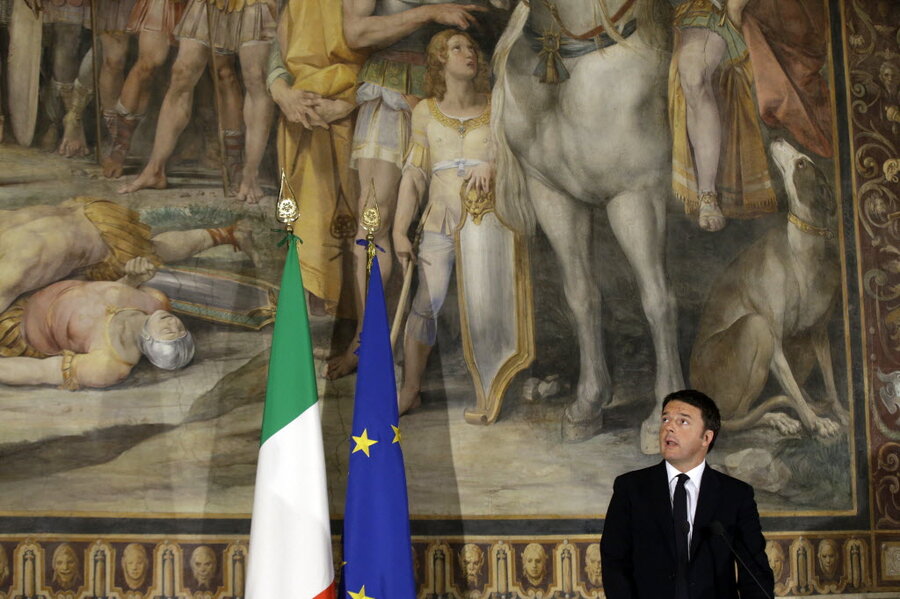Italy's artful arsenal against Islamic State
Loading...
Up to now, the West’s war on Islamic State (IS) has been mainly one of words and weapons. On Tuesday, Italian Prime Minister Matteo Renzi opened a new front, directed at the influx of refugees into Italy from conflict zones like Syria and Iraq. He proposed spending $1 billion to fight terrorism with culture, namely Western art and architecture.
Among other efforts, he plans to offer $500 to 18-year-olds to go to concerts, museums, and theaters. Italy, after all, has plenty of art to go around, from Greek temples to the La Scala opera house.
Mr. Renzi hopes to improve security by instilling a “cultural identity” among the new immigrants. He was inspired to act after the Nov. 13 attack on a concert hall in France by IS militants and the group’s destruction of ancient treasures in the Middle East, such as the Parthian city of Hatra.
“What happened in Paris signaled a step-up in the cultural battle that we are living,” Renzi said. “They imagine terror; we answer with culture. They destroy statues; we love art. They destroy books; we are the country of libraries.”
He is building on a strong tradition. Art has long been an instrument of both warmaking (e.g., Nazi music) and peacebuilding (the pianist who played John Lennon’s “Imagine” outside the Paris concert hall after the attacks). But these days many private activist groups try to use art mostly to help people involved in a conflict to heal and reconcile.
Take, for example, a recent production of Shakespeare’s “Romeo and Juliet” by actors from Serbia and Albania, two countries still bitter about each other 16 years after a violent separation.
Or the recent production by Syrian children in a refugee camp of the Bard’s “King Lear,” with its themes of lost land and separated families. Or the introduction of laughter to refugees in Greece by the group Clowns Without Borders.
“Art is not a mirror held up to reality, but a hammer with which to shape it,” said the German dramatist Bertolt Brecht. The right kind of art, from hip hop to a Michelangelo sculpture, can lift spectators out of themselves to see another reality, a universal truth, or a bond with those far different than themselves. A person may temporarily shed a conflict-infused identity for one with a higher meaning or develop a greater capacity for empathy. At its best, art can free an individual, whether it be the performer or the viewer.
Renzi’s plan to help young immigrants feel the creative liberty of art is a small step compared to the billions spent on military warfare against IS. But the world needs broader concepts of security. Art that changes thought toward peacemaking should be in every nation’s arsenal.







